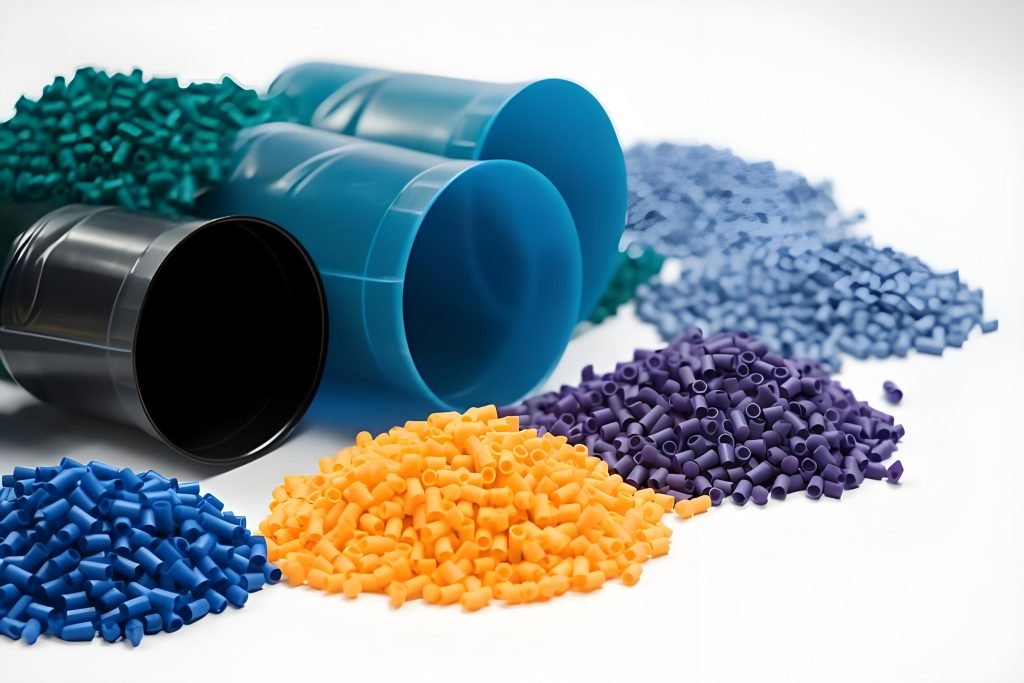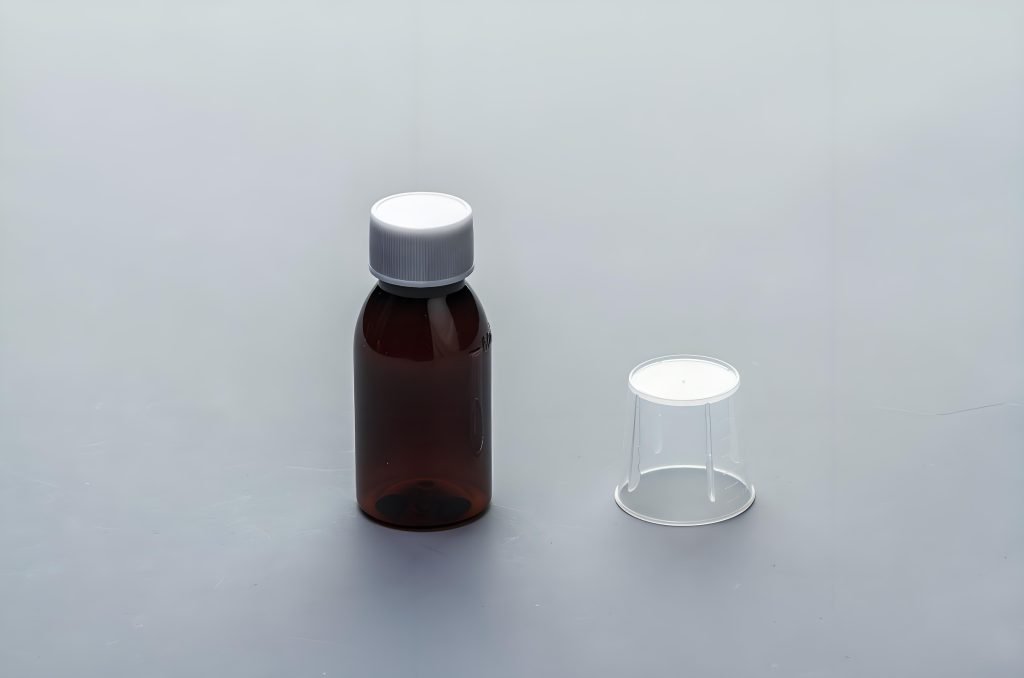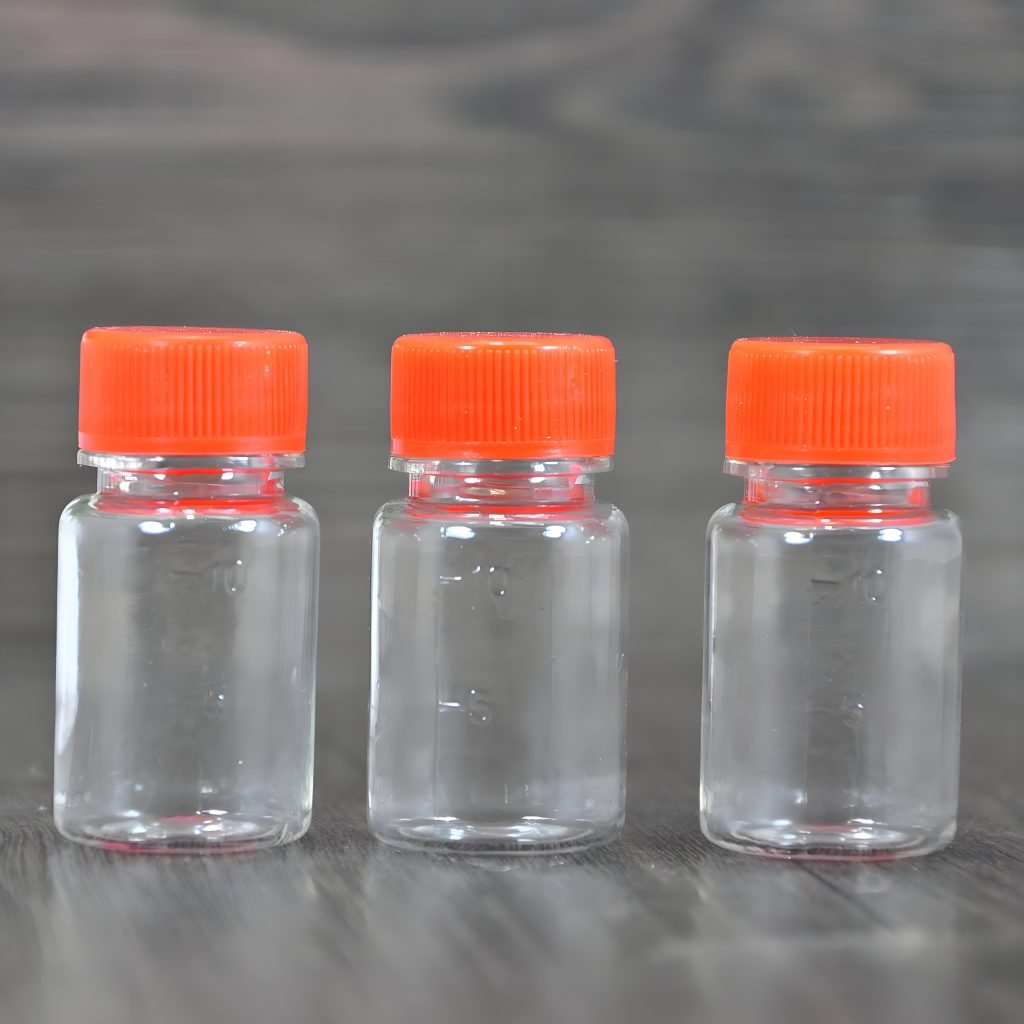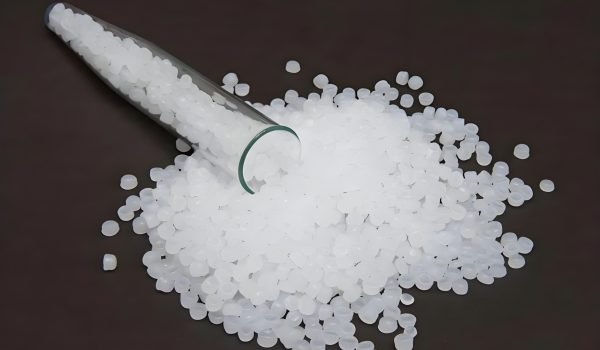Did you know that polyethylene terephthalate, commonly known as PET, is one of the most widely used thermoplastic polymers in the world? Its versatility and wide range of applications have made it a staple in various industries, from packaging to textiles.
Developed in the 1940s, PET Plastic has evolved significantly over the years, with its use expanding from simple packaging materials to high-performance applications. Today, it is used in manufacturing beverage bottles, clothing fibers, and even engineering resins when combined with glass fiber.
This comprehensive guide will explore the properties, grades, and uses of polyethylene terephthalate, as well as its environmental impact and recyclability. Whether you’re a manufacturer, product designer, or simply interested in understanding this versatile material, this article provides valuable insights into the world of PET.
What is Polyethylene Terephthalate (PET)?

Polyethylene terephthalate, commonly abbreviated as PET, is a versatile thermoplastic polymer that’s worth exploring in detail. You might have encountered PET in various forms, from beverage bottles to clothing fibers.
Chemical Composition and Structure
PET consists of repeating units of (C10H8O4), formed through a polymerization reaction between terephthalic acid and ethylene glycol. This process can occur through either an esterification reaction or a transesterification reaction. The resulting molecular structure gives PET its unique properties, including clarity, strength, and barrier properties, making it ideal for containing beverages and food products.
Understanding the fundamental chemistry of PET helps explain its physical properties and suitability for a wide range of applications, from food-grade packaging to high-performance textiles. As a material, PET is characterized by its excellent strength-to-weight ratio and versatility, making it a popular choice for various products.
Key Properties of PET Plastic
PET plastic’s versatility stems from its unique combination of properties, making it a popular choice for packaging and other uses. You will explore the physical, mechanical, and thermal properties that contribute to its widespread adoption.
Physical Properties
PET plastic exhibits a range of physical properties that make it ideal for various applications. It is a colorless, semi-crystalline resin that can be formed into either non-crystalline (amorphous) or crystalline articles depending on processing conditions. Its clarity and high strength make it particularly suitable for packaging.
The material’s amenability to drawing in manufacturing makes PET useful in fibre and film applications. Like most aromatic polymers, it has better barrier properties than aliphatic polymers, which is crucial for packaging applications where preventing gas and moisture exchange is essential.
Mechanical Properties
The mechanical properties of PET plastic are impressive, with a tensile strength of 55-75 MPa and Young’s modulus ranging from 2800-3100 MPa. These properties indicate that PET is strong and impact-resistant, capable of withstanding significant physical stress without breaking. Its elastic limit of 50-150% further demonstrates its flexibility and durability.
Thermal Properties
PET’s thermal properties are crucial for both processing and end-use applications. It has a glass transition temperature between 67-81°C and a melting point above 250°C, allowing it to maintain its structural integrity across a wide temperature range. The linear expansion coefficient is 7×10−5 K−1, and it has a Vicat B of 82 °C, indicating its stability under various thermal conditions.
Understanding PET Grades and Classifications
The versatility of PET plastic is reflected in its various grades, each designed to meet the demands of different industries and uses. You can choose the right PET grade for your application by understanding the characteristics and classifications of PET.
Bottle Grade PET
Bottle grade PET is known for its high clarity and excellent barrier properties, making it perfect for food and beverage containers. Its intrinsic viscosity (IV) typically ranges between 0.70-0.85 dL/g, providing the necessary strength and transparency. You’re looking for a material that can withstand the demands of packaging carbonated drinks or other beverages, bottle grade PET is an ideal choice.
Fiber Grade PET
Fiber grade PET, with an IV range of 0.40-0.70 dL/g, is specifically formulated for textile applications. You need a material that offers durability and the right processing characteristics for clothing and industrial fabrics, fiber grade PET is the way to go. Its properties make it suitable for a wide range of textile products.
Film Grade PET
Film grade PET, often referred to as BOPET when biaxially oriented, has an IV range of 0.60-0.70 dL/g. It offers exceptional tensile strength and dimensional stability, making it perfect for packaging films, electrical insulation, and decorative applications. You’re looking for a PET material for film applications, understanding the benefits of film grade PET can help you make an informed decision.
Understanding these different PET grades helps you select the appropriate PET material for your specific application requirements, ensuring optimal performance and cost-effectiveness.
Advantages and Disadvantages of PET Plastic
PET plastic, known for its versatility, presents several benefits and drawbacks that need to be evaluated. As you consider PET for your applications, understanding its advantages and limitations is crucial for making informed decisions.
Benefits of Using PET
PET plastic offers numerous advantages that have contributed to its widespread adoption. Its exceptional strength-to-weight ratio allows for lightweight yet durable packaging solutions. You’ll appreciate PET’s outstanding clarity and transparency, making it ideal for applications where product visibility is important. Additionally, its shatterproof nature provides safety benefits over glass alternatives. The material’s excellent barrier properties against gases, moisture, and odors help extend the shelf life of packaged products.
Limitations and Challenges
Despite its benefits, PET has several limitations. It has lower heat resistance compared to some other plastics, making it unsuitable for high-temperature applications above 70°C without special formulations. PET resins are also susceptible to oxidation, which can affect their performance. Furthermore, PET is partially derived from crude oils and is not biodegradable, raising environmental concerns. While PET is highly recyclable, challenges remain in collection infrastructure and contamination issues that can affect the quality of recycled material.
Safety Considerations: Is PET Toxic?

When it comes to packaging, you might wonder if PET plastic is safe for your food and beverages. The safety of PET has been extensively evaluated by regulatory bodies worldwide.
Regulatory Approvals and Food Safety
PET has been approved by major health authorities, including the FDA, Health Canada, and the European Food Safety Authority, for use in food contact applications. These organizations have conducted rigorous testing to ensure PET’s safety.
The testing involves studying the migration of compounds from PET into food and beverages. Studies have consistently shown that this migration is minimal, and PET is considered safe for packaging food and beverages.
Common Misconceptions About PET Safety
Some concerns have been raised about the use of antimony oxide in PET production. However, the levels of antimony that might migrate into food or beverages are far below established safety thresholds.
It’s also worth noting that PET does not contain harmful endocrine disruptors like BPA or phthalates, which are sometimes associated with other plastic materials. Understanding the scientific evidence behind PET’s safety profile can help you make informed decisions about the containers you use.
PET Recyclability and Environmental Impact
Understanding PET’s recyclability is essential for assessing its overall environmental impact. As one of the most widely recycled plastics, PET has a well-established collection and processing infrastructure in many countries, allowing it to be transformed into new products rather than ending up in landfills.
The PET Recycling Process
The PET recycling process involves several steps, from collection and sorting to washing, shredding, and reprocessing into recycled PET (rPET). This process enables the creation of new bottles, packaging, textiles, and other products, reducing the need for virgin PET production. By recycling PET, you contribute to a more circular economy.
rPET: Recycled Polyethylene Terephthalate
rPET, or recycled PET, is the result of the PET recycling process. It can be used to manufacture a variety of products, including blankets, insulation, car parts, and clothing. The use of rPET reduces the demand for virgin PET, leading to significant environmental benefits. rPET production generates approximately 71% fewer greenhouse gas emissions and uses 79% less energy compared to virgin PET production.
Environmental Footprint Compared to Alternatives
When comparing PET’s environmental footprint to alternative packaging materials like glass or aluminum, PET often performs favorably in lifecycle assessments. Its lightweight nature reduces transportation emissions, making it a more environmentally friendly option. As consumers, understanding the environmental impact of packaging materials helps you make more informed choices about plastic waste management.
PET vs PETG: Understanding the Differences
PET and PETG are often confused, but they have distinct properties that make them suitable for different applications. Understanding these differences is crucial for selecting the right material for your specific needs.
Chemical and Structural Differences
The primary difference between PET (Polyethylene Terephthalate) and PETG (Polyethylene Terephthalate Glycol-modified) lies in their chemical structure. PETG is a copolymer that incorporates cyclohexanedimethanol (CHDM) during polymerization, resulting in a modified polymer with different crystallization behavior compared to standard PET. This modification affects their physical properties, making PETG more amorphous and less prone to crystallization.
Performance and Application Variations
The structural differences between PET and PETG result in distinct performance characteristics. PET can crystallize readily, offering high impact capability, shatter resistance, and better chemical resistance, making it ideal for applications like bottles and food containers. On the other hand, PETG remains more amorphous, providing improved clarity and impact resistance, although with lower heat resistance. This makes PETG suitable for applications requiring complex shapes, clarity, and toughness, such as medical packaging and 3D printing.
Understanding when to use each material helps manufacturers optimize product performance while controlling costs, as each polyethylene terephthalate variant has specific advantages for different applications.
Processing Methods for PET Plastic
The processing of PET plastic involves several techniques, including injection molding, blow molding, and extrusion, each suited for different applications. Understanding these methods is crucial for manufacturers to produce high-quality PET products efficiently.
Injection Molding
Injection molding is a common method used for processing PET. It involves melting PET materials at temperatures around 260-280°C and injecting them into precision molds to create solid parts like preforms, caps, and engineering components. This process allows for the production of complex shapes with high precision.
Blow Molding for Bottles
Blow molding is a critical process for PET bottle production. It can be performed using either one-step or two-step processes. In the two-step process, preforms are first created through injection molding and then reheated and blown into final bottle shapes. This method is widely used for producing bottles with precise neck finishes and optimal mechanical properties.
Extrusion and Film Formation
The extrusion process for PET involves forcing melted material through a die to create continuous profiles like sheets and films. These can be further processed through techniques like biaxial orientation to enhance strength and barrier properties. Extrusion is used for producing a variety of PET products, including packaging films and sheets.
Processing PET requires careful control of temperatures, drying conditions, and cooling rates to prevent degradation and achieve optimal mechanical properties in the finished product. By understanding these processing methods, manufacturers can select the appropriate technique for their specific application, considering factors like production volume, part complexity, and required material properties.
Key Applications of PET Plastic
You might be surprised at the numerous uses of PET plastic, from everyday packaging to advanced industrial applications. PET’s versatility stems from its unique combination of properties, including clarity, strength, and resistance to various chemicals.

Food and Beverage Packaging
PET is widely used in food and beverage packaging due to its excellent barrier properties, clarity, and strength. You can find PET used in water and soft drink bottles, food containers, and other packaging materials that protect consumable products.
Textile and Fiber Applications
In its polyester form, PET dominates the textile industry, accounting for over 60% of global PET production. You’ll find PET used in clothing, home furnishings, and industrial fabrics due to its durability, wrinkle resistance, and easy care properties.
Industrial and Technical Uses
PET’s excellent electrical insulating properties make it ideal for components in electronics, solar junction boxes, and smart meters. Additionally, its mechanical strength and thermal range make it a popular material in the automotive industry for various parts and applications.
Emerging Applications and Innovations
Emerging applications for PET include sustainable innovations like using recycled PET in construction materials, 3D printing filaments, and as a substrate in photovoltaic modules for solar energy. Researchers continue to find new ways to leverage PET’s unique properties for novel products and solutions.
Conclusion: The Future of PET in Sustainable Manufacturing
As we look to the future, the role of PET in sustainable manufacturing is poised for significant transformation. The growing demand for recycled PET (rPET) is driving innovation in production and recycling methods. You can expect to see emerging technologies that improve PET recycling processes, including chemical recycling methods that break down polyethylene terephthalate to its original monomers, allowing for infinite recycling without quality degradation.
Regulatory changes worldwide are also driving increased use of recycled content. For instance, the EU has set targets for 90% collection of PET bottles by 2030 and requirements for 25% recycled content in new products. Innovations in PET design are focusing on improving recyclability through features like easily removable labels and mono-material packaging solutions.
The future of PET lies in creating more sustainable, circular systems where rPET increasingly replaces virgin material, reducing environmental impact. As sustainability becomes increasingly important to consumers and businesses alike, PET’s ability to be effectively recycled while maintaining performance characteristics positions it well for continued use in a more environmentally conscious future.




